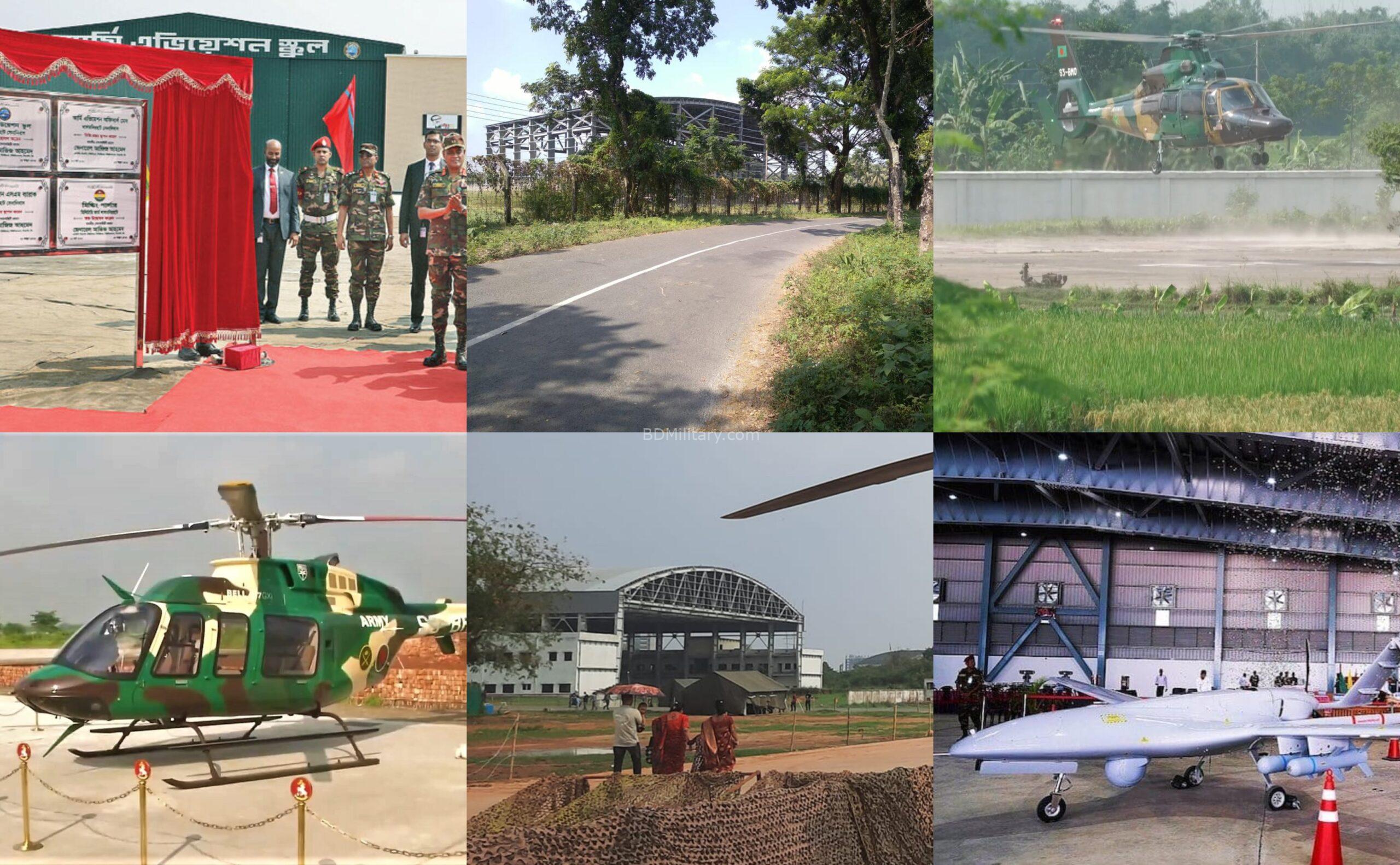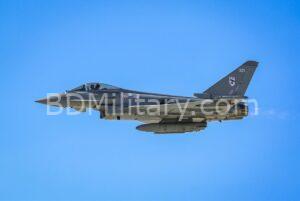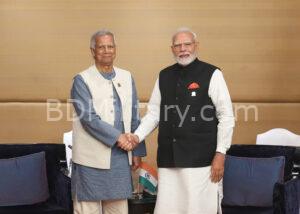Lalmonirhat Army Aviation Base, a key hub for the Bangladesh Army’s aviation operations, is undergoing significant upgrades to strengthen operational and maintenance capabilities. The construction of a large hangar has drawn media attention, with some reports suggesting it could house fighter jets. However, official clarification confirms that the facility is intended exclusively for medium-lift and rotary-wing aircraft, unmanned aerial vehicles, and other Army Aviation assets. These developments reflect the Army’s strategic focus on improving air mobility, training, and maintenance infrastructure to ensure readiness across Bangladesh.
Historical Background of Lalmonirhat Army Aviation Base
The Lalmonirhat airbase has a long and strategic history. Originally constructed in 1931 during the British colonial period, the base played a role during the Second World War. After Bangladesh’s independence in 1971, the airfield remained largely underutilised, though it was briefly used by Pakistani forces during the Liberation War. Over time, its location in northern Rangpur Division—less than 20 kilometres from the Bangladesh–India border near Cooch Behar in West Bengal—ensured its continued relevance for national security planning.
On 2 March 2020, Army Chief General Aziz Ahmed officially inaugurated the Lalmonirhat Army Aviation Base. During the visit, he also unveiled upgraded infrastructure for the Army Aviation School, laid the foundation stone for the Officers’ Mess and SM Barracks, inaugurated a modern, self-operating milking parlour at the Lalmonirhat Military Farm, and opened a newly constructed helipad. These steps marked a significant milestone in modernising the Army’s northern aviation capabilities, supporting both operational readiness and training.
Army Aviation Group and the Army Aviation School
The Army Aviation Group is a specialised branch of the Bangladesh Army that provides direct air support during operations. Its mission encompasses troop transport, logistical support, aerial reconnaissance, medical evacuation, and counterinsurgency operations. By integrating aviation capabilities directly into Army operations, the Group enhances mobility and response time for ground forces, particularly in remote or strategically sensitive areas.
Established in Dhaka in 2002, the Army Aviation School functions under the Army Aviation Group. The school trains pilots, technical personnel, and support staff in operating and maintaining Army aviation assets. Over the years, it has developed courses covering fixed-wing aircraft, rotary-wing aircraft, and unmanned aerial vehicles such as the Bayraktar TB2 UAV. Continuous upgrades ensure that personnel are trained to high standards, aligning operational readiness with evolving defence requirements.
Recent Developments at Lalmonirhat Airbase
On 16 October 2025, Army Chief General Waker-uz-Zaman visited Lalmonirhat airbase to inspect a newly constructed hangar at Haribhanga village, within the western perimeter of the 1,166-acre facility. Adjacent to an asphalt road, the hangar is designed to accommodate medium-lift aircraft, helicopters, and UAVs, providing space for maintenance, repair, and operational deployment.
Contrary to recent media speculation, the hangar is not intended for fighter aircraft. While the Bangladesh Air Force is modernising its combat aircraft fleet—including potential acquisitions of Chinese J-10CE and JF-17 Block III jets—these assets will be stationed at BAF-controlled airbases such as Cox’s Bazar, Dhaka, or Chattogram, not Army Aviation facilities like Lalmonirhat. The hangar’s dimensions are similar to existing structures at Dhaka and Chattogram, purpose-built for aircraft such as the C295W, Mi-171Sh helicopters, and Bayraktar TB2 UAVs.
Construction and Infrastructure Upgrades
Construction of the hangar has been ongoing for approximately six months, with roof work nearing completion. The next phase involves building a concrete perimeter wall, similar to enhancements already completed at Thakurgaon airbase. Thakurgaon spans roughly 550 acres and features a 1-km-long runway that remains unused for large aircraft operations. Lalmonirhat and Thakurgaon are separated by approximately 135 km, providing the Army operational flexibility across the northern sector.
The hangar and supporting infrastructure at Lalmonirhat are part of a broader push to strengthen Army Aviation’s operational and maintenance capabilities. Upgrades ensure aircraft are stored securely, maintained efficiently, and ready for deployment when needed. These improvements are critical for rapid response during emergencies, training exercises, and operational deployments.
Strategic Significance of Lalmonirhat Airbase
While the base’s proximity to the Bangladesh–India border has drawn attention, officials emphasise that Lalmonirhat’s primary role is operational support, training, and maintenance for Army Aviation assets. The facility enhances the Army’s ability to respond swiftly to natural disasters, border incidents, and internal security challenges.
In addition, the base supports the Aviation and Aerospace University, creating a hub for research, training, and innovation in aviation technology within Bangladesh. The development of hangars, helipads, and other operational infrastructure reflects lessons learned from past operations, ensuring that Army Aviation assets are always ready for immediate deployment. Medium-lift aircraft such as the C295W and Mi-171Sh are vital for troop transport, humanitarian missions, and logistical support, while UAVs like the Bayraktar TB2 enhance intelligence, surveillance, and reconnaissance capabilities.
Clarifying Media Misconceptions
Recent media reports suggested that the newly constructed hangar could be linked to Bangladesh Air Force fighter acquisitions from China or Pakistan. These claims are incorrect. Fighter jets require entirely different hangar specifications, security protocols, and operational infrastructure. The Lalmonirhat hangar is designed specifically for Army Aviation, including MRO, operational readiness, and UAV operations, and does not serve as a combat aircraft facility.
Concluding Remarks
The ongoing development of Lalmonirhat Army Aviation Base underscores the Bangladesh Army’s commitment to modernising its aviation capabilities. By combining historical significance with state-of-the-art infrastructure, the base ensures operational readiness, supports Army Aviation training, and enhances strategic flexibility in northern Bangladesh.
Investments in hangars, helipads, perimeter security, and training facilities reflect a broader strategy to strengthen Army Aviation. These upgrades not only facilitate routine operations but also enable rapid response during emergencies, border contingencies, and national security missions. Lalmonirhat stands as a testament to the Army’s dedication to professionalising and expanding its aviation arm, reinforcing its role as a critical pillar of Bangladesh’s defence infrastructure.

Khaled Ahmed is a seasoned former intelligence analyst and military expert from the Netherlands, bringing over 15 years of specialised experience in operational intelligence, threat analysis, and strategic defence planning. Having served in high-level, classified roles within Dutch military intelligence, he possesses rare expertise in European security architecture, NATO doctrine, and asymmetric warfare. Khaled’s deep operational insight and international perspective enable him to deliver precision-driven intelligence analysis and forward-looking strategic forecasts. A trusted contributor to high-level risk assessments and security briefings, he offers readers clarity on complex defence and security challenges. Khaled leads the National Security and Fact Analysis sections at BDMilitary. He holds a Master’s degree in International Relations from the University of Groningen, The Netherlands, and is fluent in Dutch, French, and Arabic — combining linguistic dexterity with operational expertise to analyse security issues across cultures and regions.


